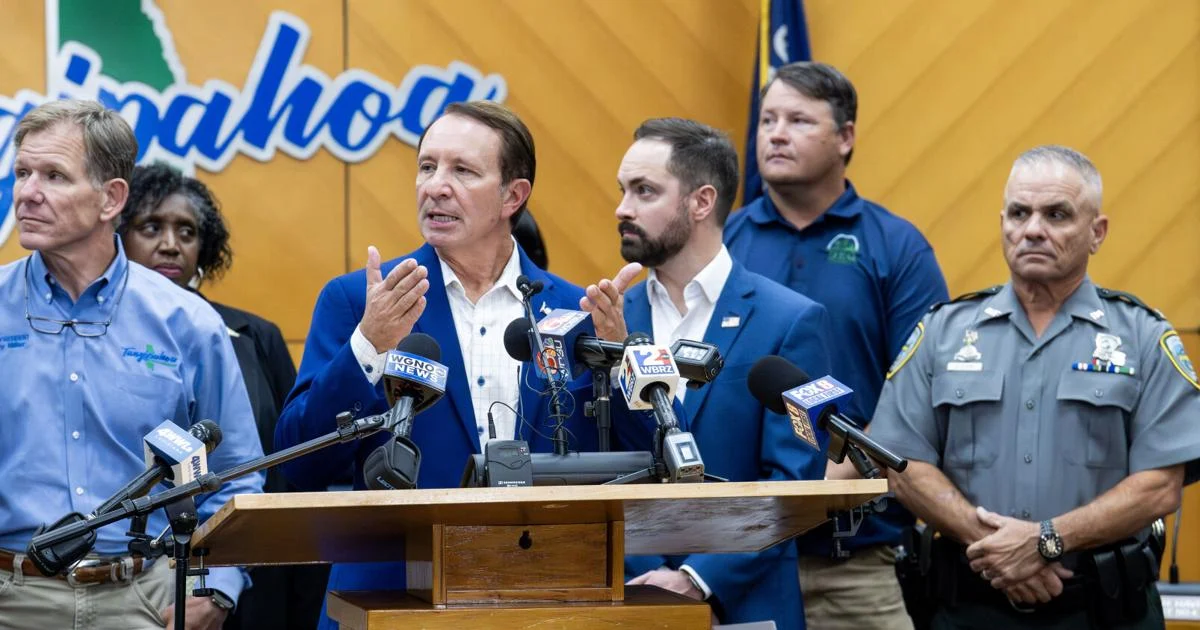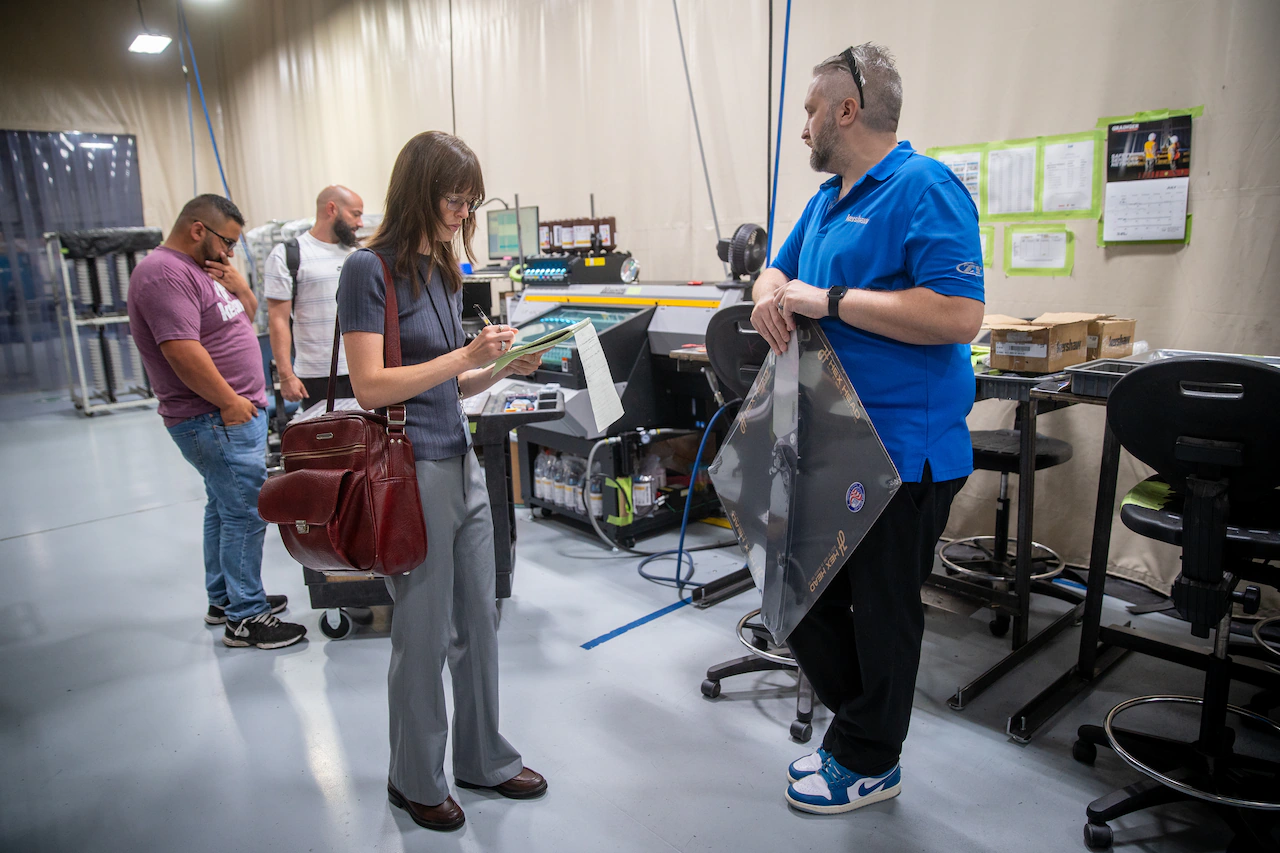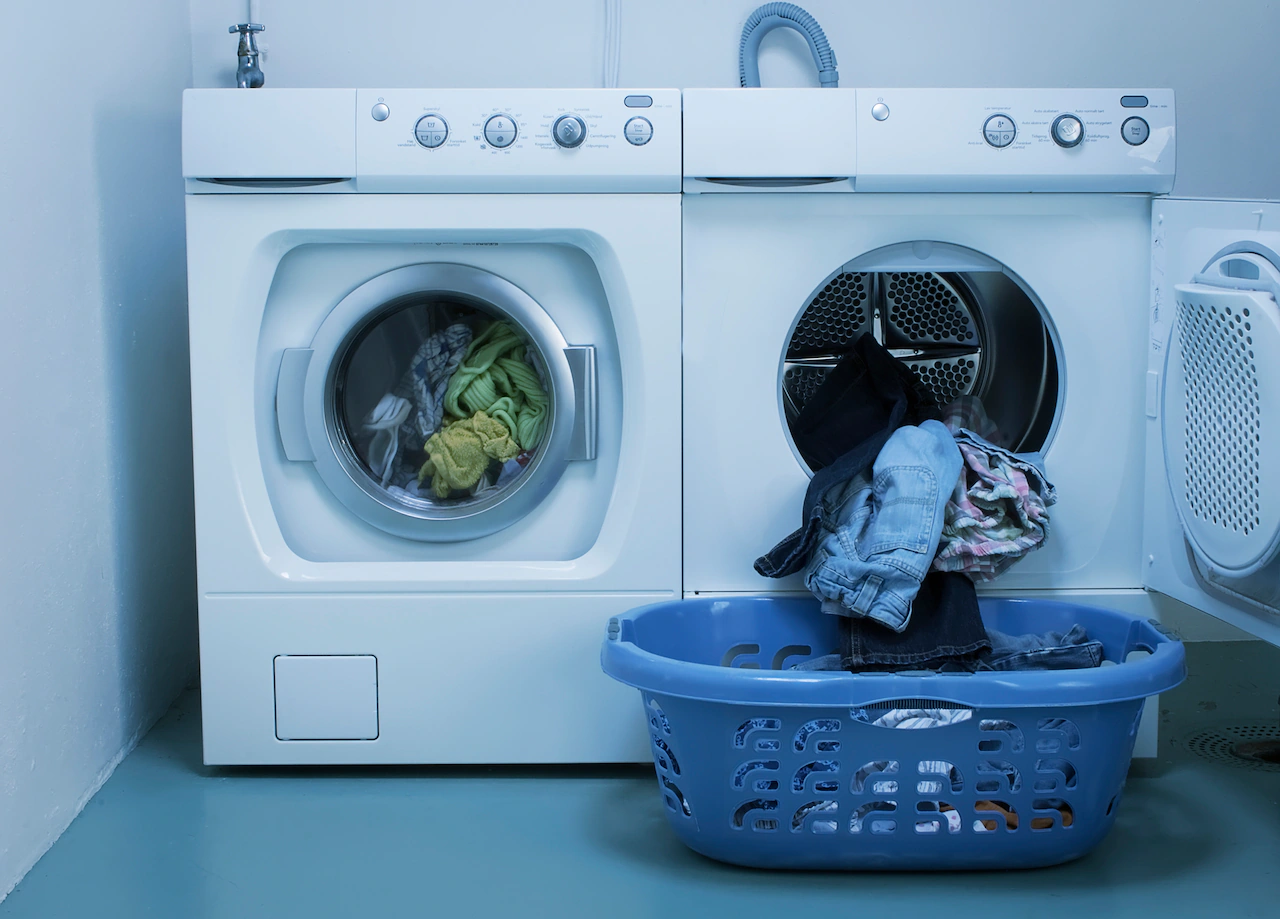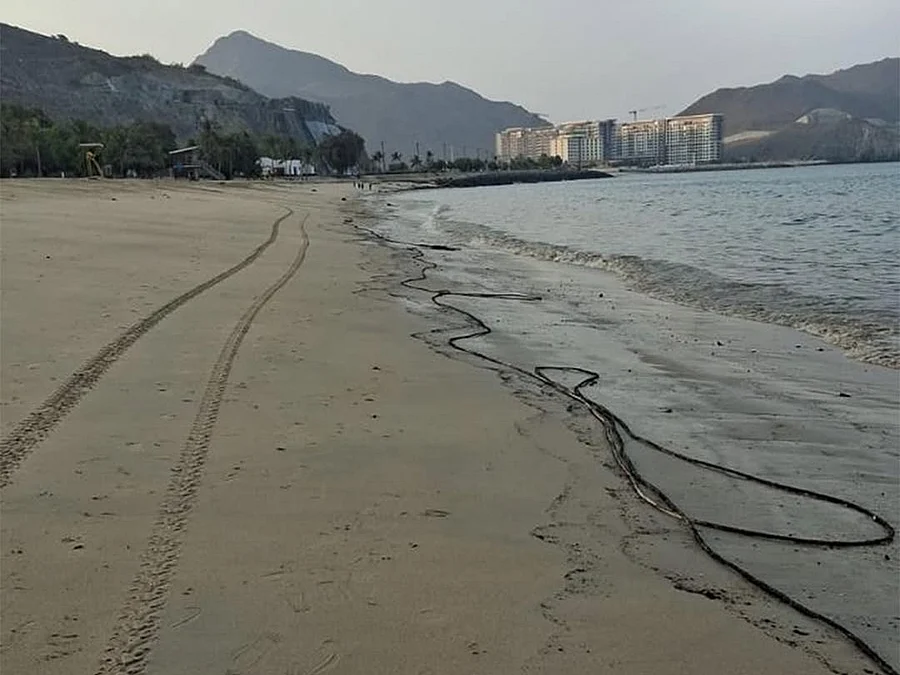
Gov. Jeff Landry on Wednesday defended the cleanup of pollution that has flowed into waterways following last month’s explosion and fire at Smitty’s Supply in Tangipahoa Parish, while federal officials said the work would press ahead despite the government shutdown.
Landry and other government officials traveled to Tangipahoa to address the situation after new video emerged showing how much pollution remained. The U.S. Environmental Protection Agency and its contractors are working under emergency authority and have “redoubled” efforts to clean up, a top agency official said.
Drone video shot by a Mandeville resident and posted online over the weekend showed some of the polluted ponds near Smitty’s and the Tangipahoa River, prompting Landry to call for a quickened recovery effort.
Landry, who posted his own video online over the weekend promising action after seeing the drone footage, defended the work of the EPA, his state officers and parish government.
He suggested their renewed collaboration was speeding the cleanup. He also pointed out that the incident posed its own challenges because it fell in a regulatory “donut hole.”
“Since that time, we have made significant progress, significant progress. While I know it’s real easy to throw popcorn from the stands and it’s easy to make criticisms when you’re not on the ground, I will tell you that this incident is a unique incident. It falls between regulatory bodies,” Landry said at Tangipahoa Parish government offices in Amite.
Scott Mason, EPA administrator for the region that includes Louisiana, said the more than 300 EPA contractors and employees have the funds they need to finish the work.
Though he offered no timeline for its completion, Mason said the cleanup of the oily material in the Tangipahoa River and nearby private ponds is about 75% finished.
“The funds are secure. There is no threat, and there will not be a threat,” Mason said.
Mason announced that the EPA had begun bringing additional equipment this week and was shifting its cleanup methods to quicken the work. That included adding more skimmers, marsh buggies, waste storage tanks, boom and disposal sources.
Mason added that one shift in cleanup tactics will be to begin removing the oiled vegetation that surrounds the ponds. That change came at the request of the state, he said.
He also defended EPA’s work, saying the agency and its contractors have removed 4 million gallons of oily material and sped up the removal rate from 85,000 gallons per day to 175,000 gallons per day.
The agency has also set up systems designed to collect rain runoff from Smitty’s and contain waste in private ponds, keeping it from continuing to flow into the Tangipahoa River.
Crews are also working downstream to cleanup oily pockets along banks while booms contain oily runoff and have come close to clearing a handful of upper portions of the river.
Residents criticize cleanup
Last month, EPA officials had said $39 million in federal Superfund and Clean Water Act money was set aside but more would be needed. Smitty’s is not financing the EPA-led work for now, but remains liable for the cost, agency officials have said.
It was not immediately clear how much money the EPA had on Wednesday.
The federal government shutdown began Wednesday after Democrats and Republicans were unable to reach a continuing spending agreement.
According to the Associated Press, an estimated 750,000 federal employees were expected to be furloughed, including from the EPA, though excepted employees who protect life and property can continue working.
Landry and Mason joined state Department of Environmental Quality Secretary Courtney Burdette and Parish President Robby Miller, among others, to detail efforts to cleanup millions of gallons of oily waste that ran off into the Tangipahoa River and nearby private ponds after Smitty’s caught fire Aug. 22.
The massive fire near Roseland burned at least one parish fire truck and sent a large, black plume over a rural corner of the parish, dropping soot on residents and requiring a 1-mile evacuation zone.
The EPA has said soot was reported 15 miles away from Smitty’s. The fire was not extinguished fully until Sept. 8.
The lubricants and plastic bottle plant had millions of gallons of motor oil, lube oil, mineral spirits, chain saw oil, gasoline, alkylate gas, glycol, urea, antifreeze, phosphoric acid and other chemicals and hydrocarbons, according to a company inventory EPA shared.
Some landowners still worry that EPA isn’t moving fast enough.
Businessman Joey Lombardo owns land that contains two of the ponds that received significant runoff from Smitty’s. Lombardo said he is worried the oily removal could take weeks longer, leaving his and others’ ponds susceptible to a major influx of rainfall that could overcome specialized dams EPA built to prevent oily waste from escaping.
“The cleanup is slow and frankly putting the environment at risk of further harm,” he said.
Officials cite progress
EPA officials countered that they’ve cut oily waste levels in one of those ponds by more than a foot and are making progress in each of the four that have received the vast majority of the oily runoff from Smitty’s.
Adam Adams, EPA incident commander and federal on-scene coordinator, added that water levels in the ponds are low due to the lack of rain.
“So, we can handle a big rainfall on any of these ponds and not worry about it getting to the river,” Adams said.
He said the majority of the runoff from Smitty’s wound up in the ponds, which initially prevented much of it from reaching the river.



